Orchestral and Chamber Music Scores
- p.1 (Ad - Be)
- p.2 (Be - Bl)
- p.3 (Bo - Co)
- p.4 (Co - Gr)
- p.5 (Gr - Ha)
- p.6 (Ha - Ma)
- p.7 (Ma - Mo)
- p.8 (Mo - Pe)
- p.9 (Pe - Sc)
- p.10 (Sc - St)
- p.11 (St - Ze)
- Next >
-
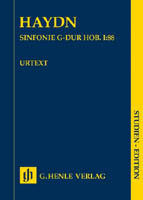
-
Haydn, Franz Joseph
Symphony No 88 in G, Hob.I:88 (Friesenhagen) [study score]
Classical. Haydn probably composed his Symphony no. 88 in G major in 1787, just one year after the six so-called Paris symphonies. It was written, together with its sister work, the F-major Symphony no. 89, for the violinist Johann Tost, who sold it to the Parisian publisher Sieber. In both works, Haydn continues the compositional achievements of the Paris symphonies: mastery of orchestration, richness of musical ideas and details, and an idiosyncratic, multicoloured use of the wind section (whic...
Read More
Category: Orchestra Study Scores
Item: 127101
Grade:
Price: $16.95
Availability: Usually Ships in 24 Hours - View Shopping Cart
-
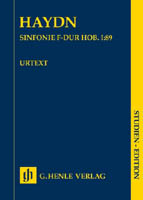
-
Haydn, Franz Joseph
Symphony No 89 in F, Hob.I:89 (Friesenhagen) [study score]
Classical. According to his dating of the autograph, Haydn composed the Symphony no. 89 in F major in 1787, just one year after the six so-called Paris symphonies. It was written, together with its sister work, the G-major Symphony no. 88, for the violinist Johann Tost, who sold it to the Parisian publisher Sieber. In both works, Haydn continues the compositional achievements of the Paris symphonies: mastery of orchestration, richness of musical ideas and details, and an idiosyncratic, multicolou...
Read More
Category: Orchestra Study Scores
Item: 127102
Grade:
Price: $16.95
Availability: Usually Ships in 24 Hours - View Shopping Cart
-
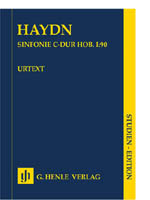
-
Haydn, Franz Joseph
Symphony No 90 in C, Hob.I:90 (Fiesenhagen) [study score]
Classical. Haydn's three Symphonies nos. 90-92 might rightly be dubbed his "Paris Symphonies Part II", as they were commissioned in 1788/89, likewise by the Soci‚t‚ Olympique, for which Haydn had already composed his six "Paris Symphonies" nos. 82-87 just a few years earlier. Ironically enough, Haydn would later sell these three a second time to Prince von Oettingen-Wallerstein who requested he "receive 3 new symphonies from him". Regardless of such mercantile entanglements, Haydn shows himself t...
Read More
Category: Orchestra Study Scores
Item: 129721
Grade:
Price: $16.95
Availability: Usually Ships in 24 Hours - View Shopping Cart
-
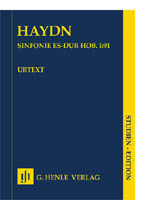
-
Haydn, Franz Joseph
Symphony No 91 in Eb, Hob.I:91 (Fiesenhagen) [study score]
Classical. Haydn's three Symphonies nos. 90-92 might rightly be dubbed his "Paris Symphonies Part II", as they were commissioned in 1788/89, likewise by the Soci‚t‚ Olympique, for which Haydn had already composed his six "Paris Symphonies" nos. 82-87 just a few years earlier. Ironically enough, Haydn would later sell these three a second time to Prince von Oettingen-Wallerstein who requested he "receive 3 new symphonies from him". Regardless of such mercantile entanglements, Haydn shows himself t...
Read More
Category: Orchestra Study Scores
Item: 129722
Grade:
Price: $16.95
Availability: Usually Ships in 24 Hours - View Shopping Cart
-
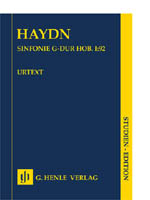
-
Haydn, Franz Joseph
Symphony No 92 in G, Hob.I:92 (Fiesenhagen) [study score]
Classical. Haydn's three Symphonies nos. 90-92 might rightly be dubbed his "Paris Symphonies Part II", as they were commissioned in 1788/89, likewise by the Soci‚t‚ Olympique, for which Haydn had already composed his six "Paris Symphonies" nos. 82-87 just a few years earlier. Ironically enough, Haydn would later sell these three a second time to Prince von Oettingen-Wallerstein who requested he "receive 3 new symphonies from him". Regardless of such mercantile entanglements, Haydn shows himself t...
Read More
Category: Orchestra Study Scores
Item: 129723
Grade:
Price: $16.95
Availability: Usually Ships in 24 Hours - View Shopping Cart
-
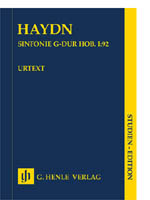
-
Haydn, Franz Joseph
Symphony No 93 in D, Hob.I:93 - Oxford [London No 1] (Zahn/Gruber/Muhle) [study score]
Classical. Haydn's three Symphonies nos. 90-92 might rightly be dubbed his "Paris Symphonies Part II", as they were commissioned in 1788/89, likewise by the Soci‚t‚ Olympique, for which Haydn had already composed his six "Paris Symphonies" nos. 82-87 just a few years earlier. Ironically enough, Haydn would later sell these three a second time to Prince von Oettingen-Wallerstein who requested he "receive 3 new symphonies from him". Regardless of such mercantile entanglements, Haydn shows himself t...
Read More
Category: Orchestra Study Scores
Item: 129724
Grade:
Price: $16.95
Availability: Usually Ships in 24 Hours - View Shopping Cart
-
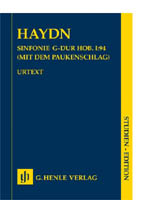
-
Haydn, Franz Joseph
Symphony No 94 in G, Hob.I:94 - Surprise [London No 2] (Zahn/Muhle) [study score]
Classical. The twelve "London Symphonies" comprise the sublime final statement of Haydn's symphonic oeuvre. They were written for the London impresario Johann Peter Salomon, and Haydn himself conducted their premieres during his lengthy stays in the English metropolis in 1791/92 and 1794/95. To this day, the G-major symphony, first performed in March 1792, numbers among Haydn's most popular works. It owes its English nickname "Surprise" to the striking tutti chords in the Andante, which apparent...
Read More
Category: Orchestra Study Scores
Item: 132763
Grade:
Price: $16.95
Availability: Usually Ships in 24 Hours - View Shopping Cart
-
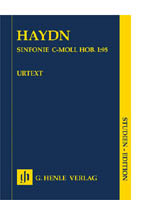
-
Haydn, Franz Joseph
Symphony No 95 in Cm, Hob.I:95 [London No 3] (Zahn/Gruber/Muhle) [study score]
Classical. The twelve "London Symphonies" comprise the sublime final statement of Haydn's symphonic ouvre. They were written for the London impresario Johann Peter Salomon, and Haydn himself conducted their premieres during his lengthy stays in the English metropolis in 1791/92 and 1794/95. Probably composed in the winter of 1791/92, the Symphony in D major no. 93 was, with its easily accessible (butby no means simple!) musical structure, perfectly tailored to London tastes, which demanded melodi...
Read More
Category: Orchestra Study Scores
Item: 129981
Grade:
Price: $16.95
Availability: Usually Ships in 24 Hours - View Shopping Cart
-
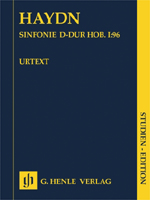
-
Haydn, Franz Joseph
Symphony No 96 in D, Hob.I:96 [London No 4] (Gruber) [study score]
Classical. The twelve "London Symphonies" comprise the sublime final statement of Haydn's symphonic oeuvre. They were written for the London impresario Johann Peter Salomon, and Haydn himself conducted their premieres during his lengthy stays in the English metropolis in 1791/92 and 1794/95. Hailing from 1791, the Symphony in D major no. 96 numbers among the first symphonies written in and for London. The epithet given to it by posterity, "The Miracle", was bestowed erroneously, for the miracle -...
Read More
Category: Orchestra Study Scores
Item: 129268
Grade:
Price: $16.95
Availability: Usually Ships in 24 Hours - View Shopping Cart
-
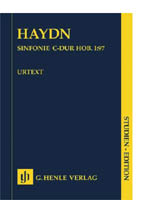
-
Haydn, Franz Joseph
Symphony No 97 in C, Hob.I:97 [London No 5] (Zahn/Muehle) [study score]
Classical. The twelve "London Symphonies" comprise the sublime final statement of Haydn's symphonic oeuvre. They were written for the London impresario Johann Peter Salomon, and Haydn himself conducted their premieres during his lengthy stays in the English metropolis in 1791/92 and 1794/95. In his C-major symphony, performed for the first time in May 1792, Haydn bestowed a particular honour on Salomon, who was also the leader of the orchestra: At the end of the minuet, he wrote a little solo in...
Read More
Category: Orchestra Study Scores
Item: 132772
Grade:
Price: $16.95
Availability: Usually Ships in 24 Hours - View Shopping Cart
-
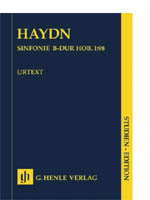
-
Haydn, Franz Joseph
Symphony No 98 in Bb, Hob.I:98 [London No 6] (Zahn/Muehle) [study score]
Classical. The twelve "London Symphonies" comprise the sublime final statement of Haydn's symphonic oeuvre. They were written for the London impresario Johann Peter Salomon, and Haydn himself conducted their premieres during his lengthy stays in the English metropolis in 1791/92 and 1794/95. The first performance of the B-flat-major Symphony no. 98 in 1792 was so successful that the two allegro outer movements even had to be repeated. Haydn led the performance - as was customary - from a keyboar...
Read More
Category: Orchestra Study Scores
Item: 132773
Grade:
Price: $16.95
Availability: Usually Ships in 24 Hours - View Shopping Cart
-
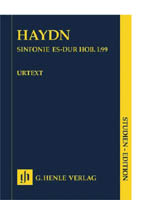
-
Haydn, Franz Joseph
Symphony No 99 in Eb, Hob.I:99 [London No 7] (Walter/Volckmar-Waschk) [study score]
Classical. Haydn arrived in London at the beginning of February 1794 for his second stay in England. At this point in time, the Symphony in E-flat major Hob. I:99 had already been completed and was premiered on 10 February. Audiences and the press were enthusiastic, as a review from the following day shows, "It is one of the grandest efforts of art that we ever witnessed. [...] - It was received with rapturous applause." Thus, an exceptional work in every sense, also for the first use of clarinet...
Read More
Category: Orchestra Study Scores
Item: 132774
Grade:
Price: $16.95
Availability: Usually Ships in 24 Hours - View Shopping Cart
-
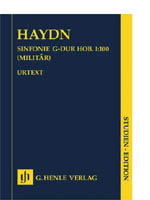
-
Haydn, Franz Joseph
Symphony No 100 in G, Hob.I:100 - Military [London No 8] (Walter/Volckmar-Waschk) [study score]
Classical. Haydn arrived in London at the beginning of February 1794 for his second stay in England. Two movements of the Symphony in G major Hob. I:100 had already been completed by then, and the finished work was premiered on 31 March. The trumpet fanfare in the second movement and the use of "janissary" percussion gave the symphony its nickname "Military Symphony," which Haydn himself even used. Its success in London was enormous; in 1794/95 alone, the work was performed nine times and thus qu...
Read More
Category: Orchestra Study Scores
Item: 132775
Grade:
Price: $17.95
Availability: Usually Ships in 24 Hours - View Shopping Cart
-
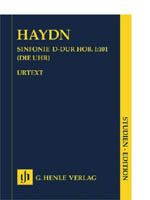
-
Haydn, Franz Joseph
Symphony No 101 in G, Hob.I:101 - Clock [London No 9] (Walter/Volckmar-Waschk) [study score]
Classical. Haydn arrived in London at the beginning of February 1794 for his second stay in England. By this time, he had completed three movements of the Symphony in D major Hob. I:101, and the finished work was premiered on 3 March. Even the members ofthe audience at the premiere took note of the pendulum-like accompanying figure in the second movement, which was in fact explicitly mentioned in a review: "The management of the accompaniments of the andante, though perfectly simple, was masterly...
Read More
Category: Orchestra Study Scores
Item: 132776
Grade:
Price: $17.95
Availability: Usually Ships in 24 Hours - View Shopping Cart
-
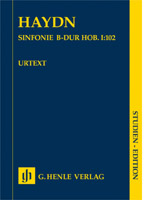
-
Haydn, Franz Joseph
Symphony No 102 in Bb, Hob.I:102 [London No 10] (Unverricht/Wilker) [study score]
Classical. The twelve "London Symphonies" comprise the sublime final statement of Haydn's symphonic ouvre. They were written for the London impresario Johann Peter Salomon, and Haydn himself conducted their premieres during his lengthy stays in the English metropolis in 1791/92 and 1794/95. The energetic, surging B-flat-major Symphony no. 102 belongs to the group of the last three symphonies premiered in early 1795. Exceptionally, Haydn here dispenses with the clarinets that are otherwise general...
Read More
Category: Orchestra Study Scores
Item: 132131
Grade:
Price: $16.95
Availability: Usually Ships in 24 Hours - View Shopping Cart
-
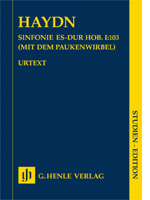
-
Haydn, Franz Joseph
Symphony No 103 in Eb, Hob.I:103 [London No 11] (Unverricht/Wilker) [study score]
Classical. The twelve "London Symphonies" comprise the sublime final statement of Haydn's symphonic ouvre. They were written for the London impresario Johann Peter Salomon, and Haydn himself conducted their premieres during his lengthy stays in the English metropolis in 1791/92 and 1794/95. The E-flat-major Symphony no. 103 was composed in 1795 as the penultimate of the London Symphonies. It owes its epithet to its unique beginning; a solo drumroll in the timpani ushers in the slow introduction. ...
Read More
Category: Orchestra Study Scores
Item: 132132
Grade:
Price: $17.95
Availability: Usually Ships in 24 Hours - View Shopping Cart
-
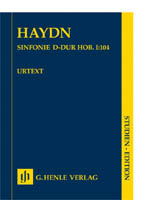
-
Haydn, Franz Joseph
Symphony No 104 in D, Hob.I:104 [London No 12] (Unverricht/Walker) [study score]
Classical. The twelve "London Symphonies" comprise the sublime final statement of Haydn's symphonic ouvre. They were written for the London impresario Johann Peter Salomon, and Haydn himself conducted their premieres during his lengthy stays in the English metropolis in 1791/92 and 1794/95. The D-major Symphony no. 104 was composed as the last of the "London Symphonies" in early 1795 and is not only the concluding work, but also the highlight of Haydn's symphonic output overall. It firmly establi...
Read More
Category: Orchestra Study Scores
Item: 129982
Grade:
Price: $17.95
Availability: Usually Ships in 24 Hours - View Shopping Cart
-
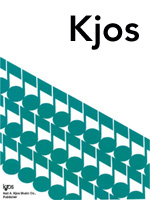
-
Himes, William
Valse Lyrique - full score
Category: Orchestra Full Scores
Item: 136775
Grade: Grade 3 - Early Intermediate
Price: $5.00
Availability: Ships in 10 to 15 Days - View Shopping Cart
-

-
Hodkison
November Voices [study score]
Parts available on rental. For voice (soprano or tenor), 2 flutes, clarinet, french horn, harp, violin, 2 cellos, double bass, 3 percussion, narrator.
Category: Chamber Music Study Scores
Item: 023221
Grade:
Price: $10.00
Availability: Usually Ships in 24 Hours - View Shopping Cart
-
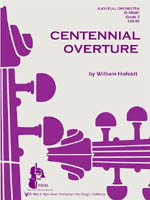
-
Hofeldt, William
Centennial Overture - full score
Category: Orchestra Full Scores
Item: 136771
Grade: Grade 4 - Intermediate
Price: $8.00
Availability: Ships in 10 to 15 Days - View Shopping Cart
-
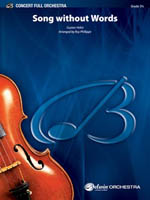
-
Holst, Gustav
Song Without Words - full score (Phillippe)
Category: Orchestra Full Scores
Item: 136839
Grade: Grade 5 - Early Advanced
Price: $10.00
Availability: Ships in 10 to 15 Days - View Shopping Cart
-

-
Humperdinck, Engelbert
Hansel & Gretel [Dover full score]
Category: Orchestra Full Scores
Item: 024656
Grade:
Price: $22.95
Availability: Usually Ships in 24 Hours - View Shopping Cart
-
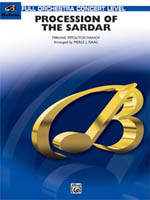
-
Ippolitov-Ivanov, Mikhail
Procession of the Sardar - full score (Isaac)
Category: Orchestra Full Scores
Item: 136748
Grade: Grade 4 - Intermediate
Price: $9.00
Availability: Ships in 10 to 15 Days - View Shopping Cart
-

-
Ives, Charles
Fugue, from Symphony No 4 - full score
Category: Orchestra Full Scores
Item: 136806
Grade: Grade 5 - Early Advanced
Price: $19.95
Availability: Ships in 10 to 15 Days - View Shopping Cart
-

-
Jenkins, Karl
Armed Man, The: A Mass for Peace
Category: Orchestra Full Scores
Item: 127634
Grade:
Price: $130.00
Availability: Ships in 10 to 15 Days - View Shopping Cart
-

-
Kaminsky, L.
Concerto for Oboe [study score]
American composer Lauren Kaminsky. Parts available on rental.
Category: Chamber Music Study Scores
Item: 104916
Grade:
Price: $35.00
Availability: Ships in 10 to 15 Days - View Shopping Cart
-

-
Karg-Elert, Siegfried
Passion Canzona-The Burial of Christ, op 84 [Breitkopf full score]
Breitkopf library edition. Includes commentary and editor's notes. Full score only - parts not included.
Category: Orchestra Full Scores
Item: 052967
Grade:
Price: $9.00
Availability: Usually Ships in 24 Hours - View Shopping Cart
-
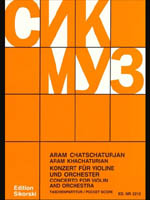
-
Khachaturian, Aram
Violin Concerto
Category: Orchestra Study Scores
Item: 137723
Grade:
Price: $55.00
Availability: Ships in 10 to 15 Days - View Shopping Cart
-
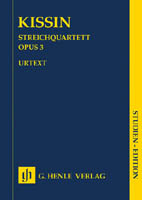
-
Kissin, Evgeny
String Quartet, op 3 [study score]
Category: Chamber Music Study Scores
Item: 127188
Grade:
Price: $15.95
Availability: Usually Ships in 24 Hours - View Shopping Cart
-
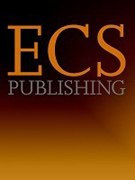
-
Larsen, Libby
Parachute Dancing [full score]#female composer
Category: Orchestra Full Scores
Item: 034787
Grade:
Price: $12.95
Availability: Usually Ships in 24 Hours - View Shopping Cart
-

-
Leoncavallo, Ruggiero
I Pagliacci [Dover full score]
Category: Orchestra Full Scores
Item: 018110
Grade:
Price: $32.95
Availability: Usually Ships in 24 Hours - View Shopping Cart
-

-
Liszt, Franz
Concertos for Piano (2)
Romantic. One of the greatest piano virtuosos of all time, Franz Liszt composed piano music marked by its technical brilliance, innovation, and imagination. This collection presents authoritative miniature score editions of two staples of the repertoire:Liszt's Piano Concerto No. 1 in E-flat Major and his Piano Concerto No. 2 in A Major. The works are reproduced here from authoritative editions, complete with bar-numbered movements for easy reference. Affordable, durable, and portable, this minia...
Read More
Category: Orchestra Study Scores
Item: 095703
Grade:
Price: $9.95
Availability: Usually Ships in 24 Hours - View Shopping Cart
-
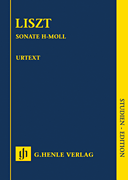
-
Liszt, Franz
Sonata in Bm (Hamelin & Herrtrich) [study score]
Following the revision of Henle's facsimile of the Piano Sonata in B minor (51483227) in 2015, they now present the corresponding new Urtext edition. With the help of the splendid facsimile reproduction they were able to analyze several passages in the autograph more reliably; in addition the editor Ernst Herttrich not only consulted the first edition but also a copy of a student of Liszt's, in which the composer had made entries in his own hand. Clara Schumann reacted with a lack of understandin...
Read More
Category: Chamber Music Study Scores
Item: 112393
Grade:
Price: $11.95
Availability: Usually Ships in 24 Hours - View Shopping Cart
-

-
Liszt, Franz
Totentanz & Hungarian Folk Song Fantasy [Dover full score]
Dover reprint from early standard editions. Two standards of the Romantic repertoire for piano and orchestra are available here for the first time in a single volume. Liszt's symphonic poem Totentanz (Dance of Death) consists of six variations on the familiar Gregorian "Dies Irae" plainchant melody. His Fantasy on Hungarian Folk Tunes displays the same lyric grace and vital rhythms as his famous Hungarian Rhapsodies. Full score only - parts not included.
Category: Orchestra Full Scores
Item: 053377
Grade:
Price: $14.95
Availability: Usually Ships in 24 Hours - View Shopping Cart
-

-
MacDowell, Edward
Concertos for Piano Nrs 1 & 2 [Dover full score]
Dover reprint of 1907 and 1911 Breitkopf & Hartel editions. Full score only - parts not included.
Category: Orchestra Full Scores
Item: 049814
Grade:
Price: $18.95
Availability: Usually Ships in 24 Hours - View Shopping Cart
-

-
Mahler, Gustav
Symphonies No 1 & 2 [Dover full score]
Category: Orchestra Full Scores
Item: 003665
Grade:
Price: $24.95
Availability: Usually Ships in 24 Hours - View Shopping Cart
-
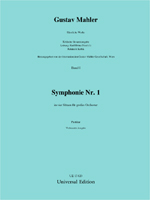
-
Mahler, Gustav
Symphony No 1 in D - full score (Wilkens)
Category: Orchestra Full Scores
Item: 139386
Grade:
Price: $83.95
Availability: Ships in 10 to 15 Days - View Shopping Cart
-

-
Mahler, Gustav
Symphony No 3 in Cm (Ratz/Fuessl)
Category: Orchestra Full Scores
Item: 139387
Grade:
Price: $114.95
Availability: Ships in 10 to 15 Days - View Shopping Cart
-

-
Mahler, Gustav
Symphony No 4 in G (Stark-Voit)
Category: Orchestra Study Scores
Item: 139388
Grade:
Price: $49.95
Availability: Ships in 10 to 15 Days - View Shopping Cart
-

-
Mahler, Gustav
Symphony No 4 in G (Stark-Voit) [full score]
This new edition of Mahler's great 4th symphony takes us to a point where the numerous stages of reworking and countless reading errors, misunderstandings, further printing errors and contradictions missed by Mahler himself, in addition to the final version of the score, have been considered and evaluated. The new, computer-based score generation required several rounds of precise proofreading; all editorial decisions are outlined transparently in an extensive critical commentary. A preface on it...
Read More
Category: Orchestra Full Scores
Item: 134922
Grade: Advanced
Price: $125.00
Availability: Usually Ships in 24 Hours - View Shopping Cart
-
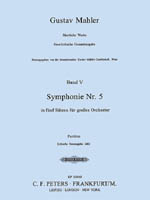
-
Mahler, Gustav
Symphony No 5 in C#m (Kubik)
Category: Orchestra Full Scores
Item: 139389
Grade:
Price: $120.00
Availability: Ships in 10 to 15 Days - View Shopping Cart
-
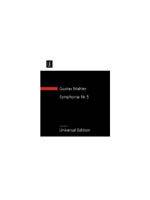
-
Mahler, Gustav
Symphony No 5 in C#m - study score (Kubik)
Category: Orchestra Study Scores
Item: 139390
Grade:
Price: $56.50
Availability: Ships in 10 to 15 Days - View Shopping Cart
-
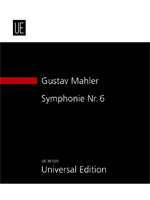
-
Mahler, Gustav
Symphony No 6 in Am (Kubik)
Category: Orchestra Study Scores
Item: 139392
Grade:
Price: $56.50
Availability: Ships in 10 to 15 Days - View Shopping Cart
-
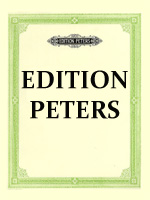
-
Mahler, Gustav
Symphony No 6 in Am (Kubik)
Category: Orchestra Full Scores
Item: 139391
Grade:
Price: $135.00
Availability: Ships in 10 to 15 Days - View Shopping Cart
-

-
Mahler, Gustav
Symphony No 7 in C (Kubik)
Category: Orchestra Full Scores
Item: 139393
Grade:
Price: $130.00
Availability: Ships in 10 to 15 Days - View Shopping Cart
-
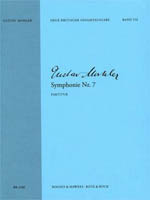
-
Mahler, Gustav
Symphony No 7 in D (Kubik)
Category: Orchestra Study Scores
Item: 139394
Grade:
Price: $56.95
Availability: Ships in 10 to 15 Days - View Shopping Cart
-
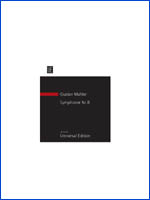
-
Mahler, Gustav
Symphony No 8 in Eb (Fuessl)
Category: Orchestra Study Scores
Item: 139396
Grade:
Price: $39.95
Availability: Ships in 10 to 15 Days - View Shopping Cart
-
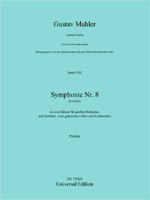
-
Mahler, Gustav
Symphony No 8 in Eb (Fuessl)
Category: Orchestra Full Scores
Item: 139395
Grade:
Price: $99.95
Availability: Ships in 10 to 15 Days - View Shopping Cart
-
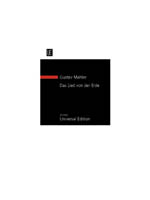
-
Mahler, Gustav
Symphony No 9 in D (Fuessl)
Category: Orchestra Study Scores
Item: 139398
Grade:
Price: $34.95
Availability: Ships in 10 to 15 Days - View Shopping Cart
-
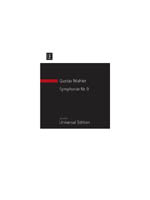
-
Mahler, Gustav
Symphony No 9 in D (Ratz)
Category: Orchestra Study Scores
Item: 139400
Grade:
Price: $39.95
Availability: Ships in 10 to 15 Days - View Shopping Cart
- p.1 (Ad - Be)
- p.2 (Be - Bl)
- p.3 (Bo - Co)
- p.4 (Co - Gr)
- p.5 (Gr - Ha)
- p.6 (Ha - Ma)
- p.7 (Ma - Mo)
- p.8 (Mo - Pe)
- p.9 (Pe - Sc)
- p.10 (Sc - St)
- p.11 (St - Ze)
- Next >
More Options
- Use our Custom Order Page to special order items you can't find.
- Use our Catalog Order Page to order items from a printed catalog, or if you already know our catalog number for the item(s) you're interested in.
- And as always, feel free to E-mail us with your questions!
